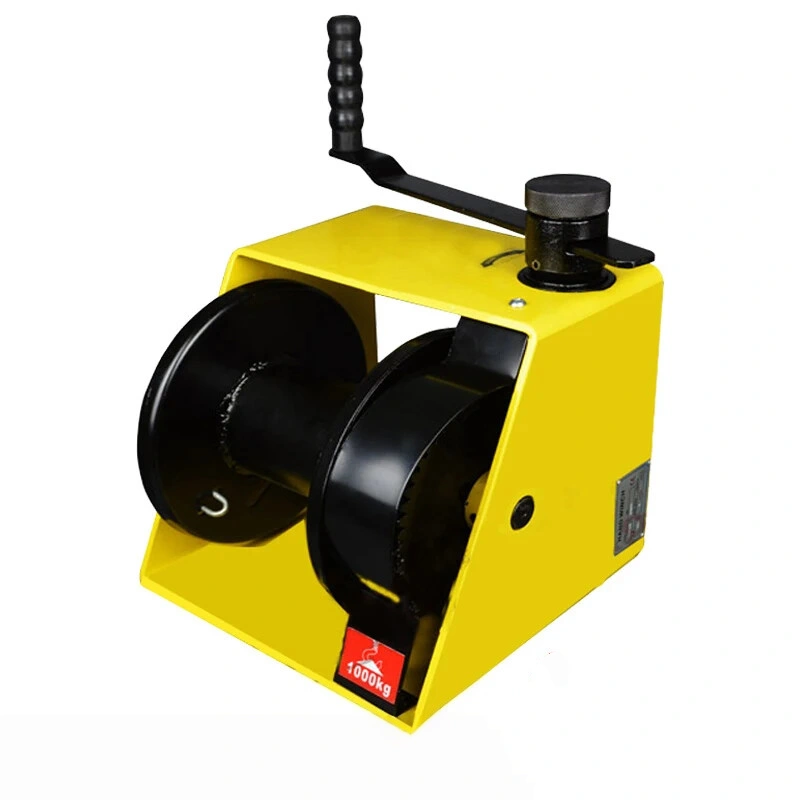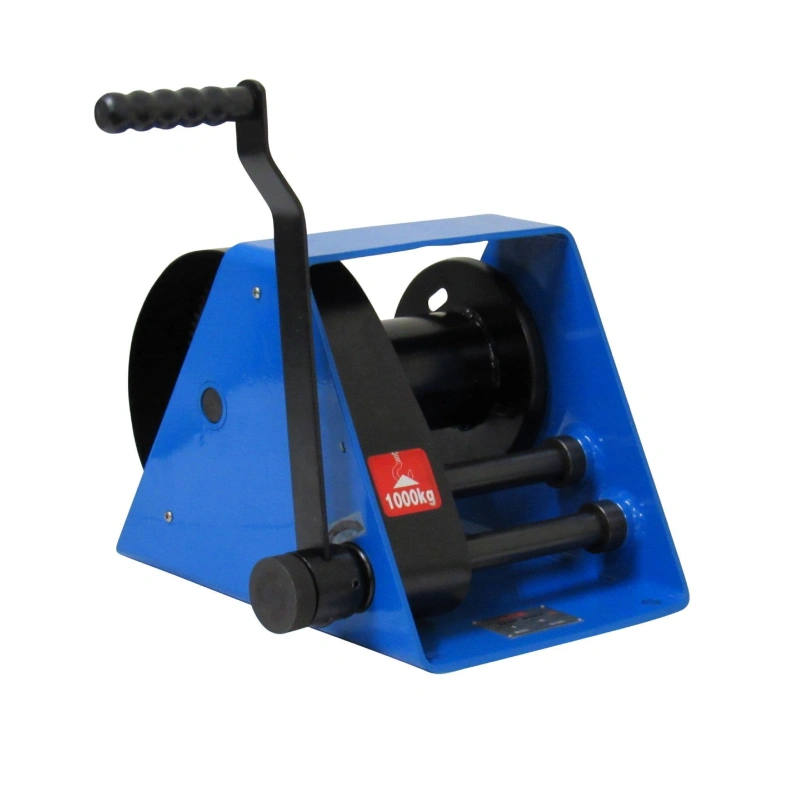You witness anchor chain manufacturing transform raw steel into precision-engineered marine chains. Powerful Machinery uses advanced technology and strict quality controls to craft each link. Certified products meet international standards, ensuring safety and reliability for demanding marine environments.
You rely on proven expertise and certified solutions to secure vessels in the harshest conditions.
Key Takeaways
Choose the right steel for anchor chains. Galvanized steel offers corrosion resistance, while stainless steel provides superior rust protection.
Precision in cutting and shaping is crucial. Accurate measurements prevent weak points and ensure the chain’s strength.
Heat treatment enhances the strength and toughness of anchor chains. Processes like quenching and tempering improve durability for marine use.
Regular inspections and testing are essential. Non-destructive testing helps detect flaws, ensuring reliable performance at sea.
Select certified anchor chains. Certifications from organizations like RINA and ISO guarantee compliance with international safety standards.
Materials and Preparation
Steel Selection
You start anchor chain manufacturing by choosing the right steel. Powerful Machinery uses galvanized steel and stainless steel for their anchor chains. Galvanized steel offers durability and strong corrosion resistance, making it the most popular choice for marine chains.
Stainless steel costs more, but it provides superior protection against rust, which is essential for vessels exposed to saltwater.
High-tensile marine-grade alloy steel gives anchor chains exceptional strength and toughness. You rely on these properties to ensure chains perform reliably in harsh marine environments. The steel must meet strict international standards to guarantee safety and quality.
Powerful Machinery sources materials that comply with ISO 1704, GB/T 20848, and DIN standards. You benefit from chains certified by leading organizations such as ABS, BV, DNV-GL, LR, CCS, EC, GL, KR, NK, and RINA.
Tip: Always check for certifications when selecting anchor chains. Certified products ensure compliance with global safety benchmarks.
Property | Carbon Steel | Alloy Steel |
|---|---|---|
Strength | High strength, suitable for rigging | Superior strength-to-weight ratio |
Toughness | Good toughness, prevents brittleness | Enhanced toughness with alloying |
Corrosion Resistance | Moderate, often requires coating | High, suitable for marine environments |
Heat Treatment Process | Quenched and tempered for hardness | More rigorous quenching and tempering |
Cutting and Shaping
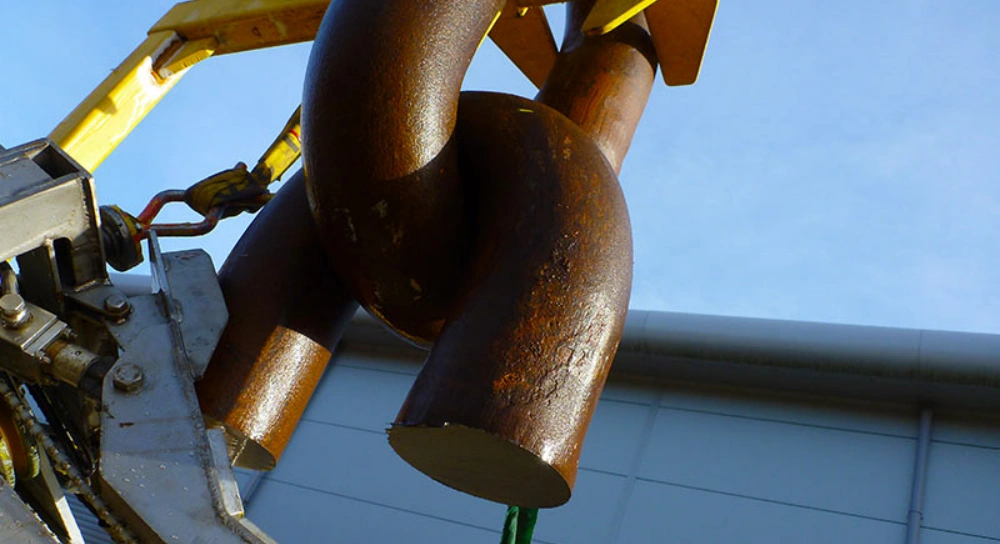
You move to the next stage by preparing steel bars for chain production. Powerful Machinery uses advanced machinery to hot roll or forge steel bars, shaping them for anchor chain links. You see precise cutting and shaping processes, including machining, punching, and bending, to create uniform links.
The manufacturing blueprint specifies exact measurements for each link. You ensure every cut meets strict tolerances, which guarantees uniformity and strength throughout the chain. Attention to detail at this stage is crucial. Accurate cutting prevents weak points and maintains the chain’s load-bearing capacity.
Key Steps in Cutting and Shaping:
Select high-strength steel bars.
Hot roll or forge bars to the required dimensions.
Cut bars to precise lengths.
Punch and bend steel to form chain links.
Inspect each link for accuracy.
Aspect | Description |
|---|---|
Cutting Precision | Raw materials are cut into specific lengths, adhering to precise measurements outlined in the manufacturing blueprint. |
Importance of Detail | Attention to detail is crucial at this stage, as accurate cutting ensures uniformity and strength throughout the chain. |
You set the foundation for durable, safe anchor chains by focusing on material quality and precision in preparation.
Anchor Chain Manufacturing Process
Heating and Forging
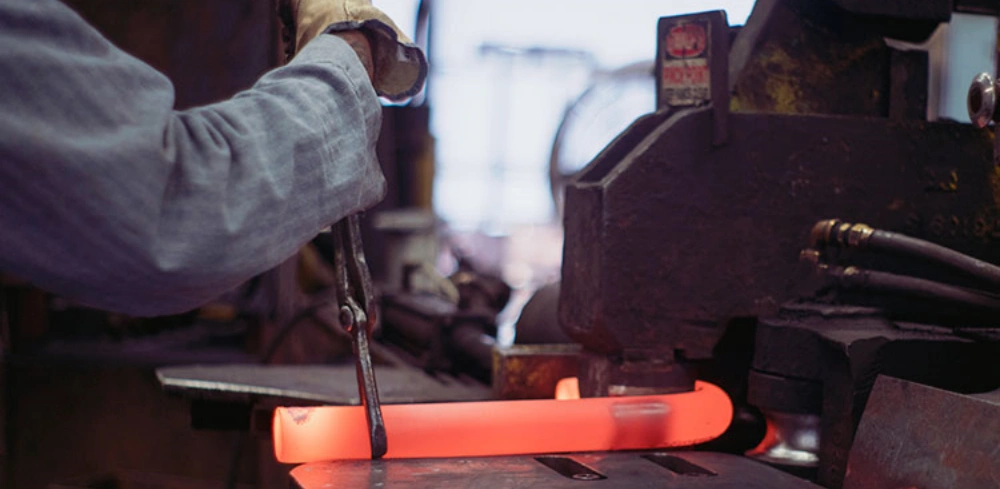
You begin anchor chain manufacturing by heating steel bars to extreme temperatures. Powerful Machinery uses advanced furnaces to reach between 1,200°C and 1,300°C. This process makes the steel malleable and ready for shaping.
You see induction hardening and tempering applied to improve hardness, strength, and toughness. These steps ensure each link can withstand tension and impact in marine environments.
Once the steel reaches the right temperature, you move to forging. Powerful Machinery uses hydraulic presses or hammers to shape the heated steel into chain links. Pressure aligns the metal molecules, increasing the strength of each link.
You notice that stud link chains require casting or electric welding, while studless anchor chains use high-strength forged or welded links. This difference in anchor chain manufacturing methods ensures each product meets specific performance needs.
Tip: Forging creates links with superior impact resistance, which is vital for anchor chains used in harsh conditions.
Type of Anchor Chain | Advantages | Disadvantages |
|---|---|---|
Cast Steel Anchor Chain | High strength, good rigidity, small deformation, wear-resisting, long service life | Complicated process, high cost, poor impact resistance |
Electric Welding Anchor Chain | Advanced and simple production technology, low cost, good quality | N/A |
Forged Anchor Chain | Good impact toughness | Complicated process, high cost, unstable quality |
Link Assembly and Welding
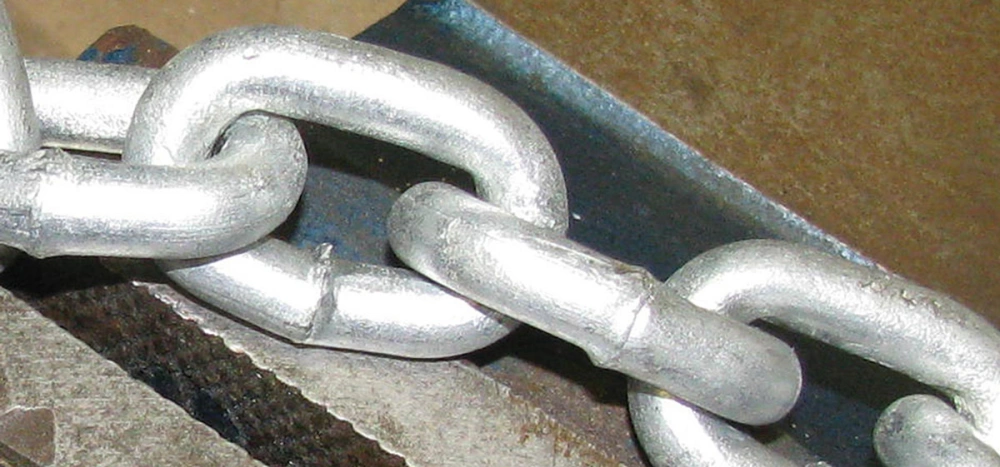
You continue anchor chain manufacturing by assembling and welding the shaped links. Powerful Machinery uses automated systems to ensure each link fits perfectly.
For stud link chains, you see the addition of a central stud, which increases strength and prevents twisting. Studless anchor chains skip this step, focusing on flexibility and ease of handling.
Welding is a critical part of anchor chain manufacturing. You watch skilled welders use electric welding under controlled conditions. Each joint undergoes strict quality checks before and after welding. You confirm material compliance, joint preparation, and fit.
During welding, you monitor pre-heating and inter-pass temperatures. Non-destructive testing, such as magnetic particle inspection or dye penetrant testing, ensures weld integrity. Visual inspections guarantee that welds are free from defects.
Anchor chains are manufactured using automated processes for consistent quality.
Electric welding joins each link under strict controls.
Proof testing confirms the chain meets safety standards.
Welds must be performed by qualified professionals using approved procedures.
Stud link chains require extra inspection due to the presence of studs.
Chain Type | Structural Components | Manufacturing Method |
|---|---|---|
Equipped with studs | Produced through casting or electric welding | |
No studs | Made using high-strength forged or welded links |
Note: The strength of stud link chains is greater when size and material are the same, but studless chains offer more flexibility for smaller vessels.
Trimming and Finishing
You finish anchor chain manufacturing by trimming and refining each link. Powerful Machinery heats the links again to prepare for trimming. You remove excess welding material to create a smooth surface. This step is essential for preventing weak points and ensuring the chain’s durability.
Final inspection follows trimming. You measure each link to confirm it meets strict tolerances. Certification ensures the chain complies with international standards. Powerful Machinery’s process guarantees that every anchor chain, whether stud link or studless, is ready for demanding marine applications.
Step | Description |
|---|---|
1 | Heat chain links to prepare for trimming. |
2 | Trim off excess welding material for a finished surface. |
3 | Perform final inspection and certification to meet quality standards. |
Quality control at every stage of anchor chain manufacturing ensures you receive chains that perform reliably in the toughest environments.
Strengthening and Protection
Heat Treatment
You rely on heat treatment to give anchor chains the strength and toughness needed for marine environments. Powerful Machinery uses several heat treatment processes to improve the mechanical properties of each link. Normalizing reduces grain size and relieves stress, which increases overall quality.
Quenching and tempering boost hardness and wear resistance, making the chain more durable. Continuous tempering keeps the temperature stable, which raises tensile strength and impact value.
Heat Treatment Process | Improvements in Mechanical Properties |
|---|---|
Normalizing | Decreases grain size and residual stress, leading to improved mechanical properties and increased quality level. |
Quenching and Tempering | Improves the hardness and wear resistance parameters of the steel. |
Continuous Tempering | Ensures stable temperature during treatment, enhancing tensile strength and impact value of the anchor chain links. |
You see that different chain grades require different treatments. Lower grades like G30 and G40 use carbon or mild steel and do not need heat treatment. Higher grades, such as G70, use quenched and tempered steel for much greater strength.
Certifications from RINA, BV, and ISO confirm that every heat treatment step meets strict international standards. You gain confidence knowing each anchor chain is reliable and safe for marine use.
Galvanizing and Coating
You protect anchor chains from corrosion by applying advanced coatings. Powerful Machinery uses hot-dip galvanizing, which covers the steel with a sacrificial zinc layer. This process shields the chain from rust, especially in saltwater.
For higher-tensile steels, you benefit from the Armorgalv process, a thermal diffusion method that works at lower temperatures and offers excellent corrosion resistance. The Galfan process, which adds aluminum to the zinc bath, gives even better protection in harsh marine conditions.
Hot-dip galvanizing creates a strong zinc barrier.
Armorgalv suits high-tensile steels and provides superior corrosion resistance.
Galfan coating enhances durability in marine environments.
You can also choose multi-layer coatings, such as epoxy plus polyurethane, for extra durability. Self-healing coatings repair minor abrasions, extending the chain’s service life. Protective coatings and cathodic protection are essential for preventing carbon steel deterioration.
Coating Method | Effectiveness | Notes |
|---|---|---|
Multi-layer coatings (epoxy + polyurethane) | High | Adds durability against corrosion during handling and deployment. |
Self-healing coatings | Moderate | Repairs minor surface abrasions automatically. |
Protective coatings | Essential | Prevents carbon steel deterioration in marine environments. |
Cathodic protection | Essential | Minimizes corrosion in harsh conditions. |
Certifications from RINA, BV, and ISO guarantee that every protective step meets global standards. You trust that each anchor chain will perform reliably, even in the toughest marine settings.
Inspection and Quality Assurance
Testing Procedures
You trust Powerful Machinery to deliver anchor chains that meet the highest standards of safety and performance. The inspection process begins with a series of mechanical and non-destructive tests.
Each chain undergoes heat treatment and proof load testing at the end of manufacturing. You see every chain length marked with a unique identification number, which ensures full traceability.
Powerful Machinery uses a wide range of inspection and testing methods to guarantee quality:
Inspection/Test Type | Description |
|---|---|
Type testing | Confirms the chain meets required standards. |
Static tensile test | Measures the maximum load the chain can handle. |
Fatigue test | Checks durability under repeated stress. |
Non-destructive test/inspection | Examines the chain for flaws without causing damage. |
Proof force | Applies a load to verify strength. |
Bending deflection | Assesses performance under bending. |
Hardness test | Determines material hardness. |
Impact test | Evaluates resistance to sudden forces. |
Breaking load test | Tests the maximum load before failure. |
Chemical and spectral analysis | Analyzes material composition and properties. |
Third-party laboratory testing | Provides independent verification and certification. |
You also benefit from advanced non-destructive testing methods, such as magnetic particle, liquid penetrant, and ultrasonic testing. These techniques help detect even the smallest defects before the chains leave the factory.
Regular testing and inspection help prevent common failures, such as D-shackle issues, excessive wear, or material defects. You reduce the risk of anchor loss and ensure reliable performance at sea.
Certification Standards
You rely on international certification standards to guarantee the reliability of every anchor chain. Powerful Machinery certifies its products through organizations like RINA, BV, and ISO. These certifications confirm that each chain meets strict global requirements for safety and quality.
Standard | Impact on Acceptance |
|---|---|
STCW Convention | Sets global requirements for anchoring procedures, ensuring quality and safety. |
You gain peace of mind knowing that certified anchor chains meet the expectations of shipbuilders, marine engineers, and operators worldwide. Certification not only proves compliance but also builds trust in the long-term performance of your anchor chains.
Conclusion
You secure your vessel’s safety by choosing anchor chains crafted through every precise manufacturing step. Each stage—from steel selection to final inspection—ensures strength, durability, and reliability. Certified processes and rigorous quality assurance protect against common risks like corrosion fatigue and overloading.
Quality Assurance Practice | Description |
|---|---|
Material Certification | Traceability of all raw materials |
Non-Destructive Testing | Detects flaws before delivery |
Load Testing | Verifies strength under stress |
Third-Party Certification | Confirms global standards |
You benefit from innovations in materials and testing, which extend service life and improve performance at sea. Trust Powerful Machinery’s expertise to deliver anchor chains that meet the highest standards.
FAQ
What certifications do Powerful Machinery anchor chains have?
You receive anchor chains certified by RINA, BV, and ISO. These certifications confirm that your chains meet strict international safety and quality standards. You can trust these products for reliable performance in marine environments.
How do you maintain anchor chains for long service life?
You should rinse chains with fresh water after use, inspect for wear, and apply rust inhibitors. Store chains in a dry place. Regular maintenance helps you prevent corrosion and ensures your chains last longer.
Can you customize anchor chains for specific projects?
You can request custom lengths, materials, and finishes. Powerful Machinery works with you to design anchor chains that fit your vessel’s requirements. Customization ensures you get the best solution for your marine application.
What is the difference between stud link and studless anchor chains?
You use stud link chains for heavy-duty anchoring. These chains have a central stud for extra strength. Studless chains offer more flexibility and lighter weight, making them ideal for smaller vessels or applications where handling ease matters.
How does Powerful Machinery ensure anchor chain quality?
Powerful Machinery uses strict inspection, non-destructive testing, and third-party certification. You benefit from proof load tests, hardness checks, and traceable identification numbers. These steps guarantee that every chain meets your safety and performance expectations.

